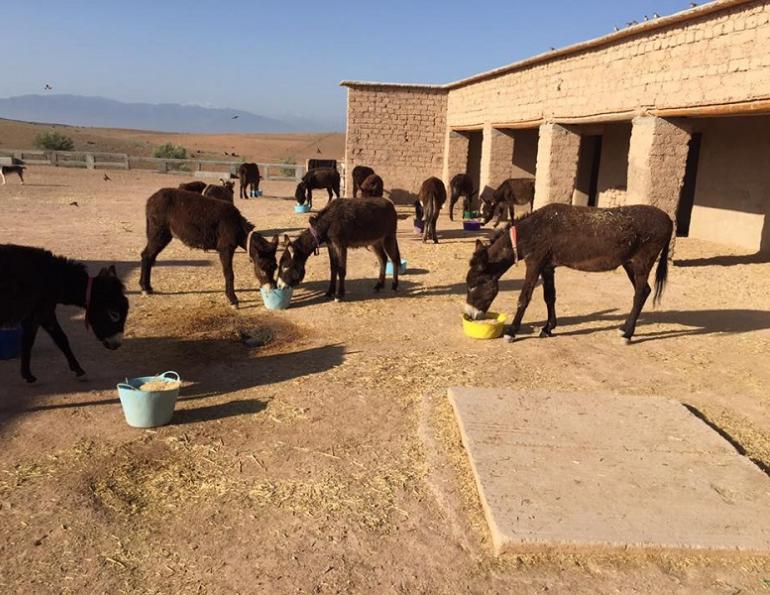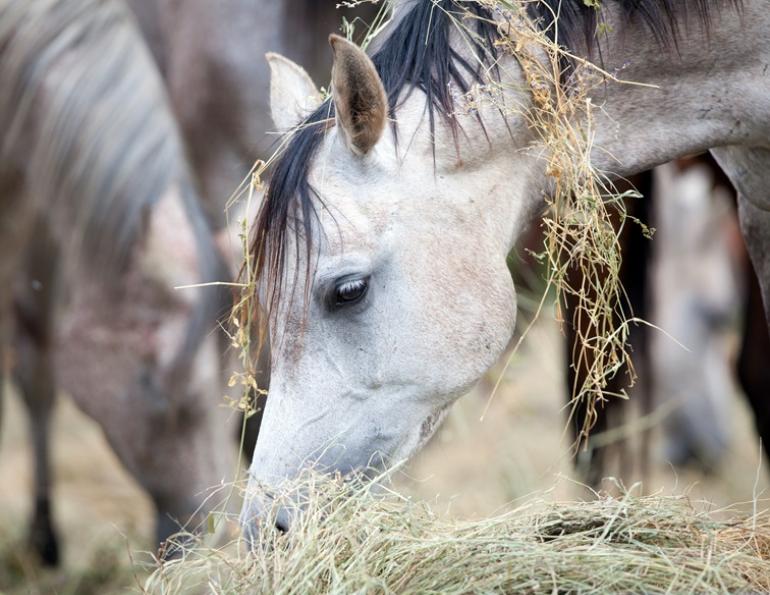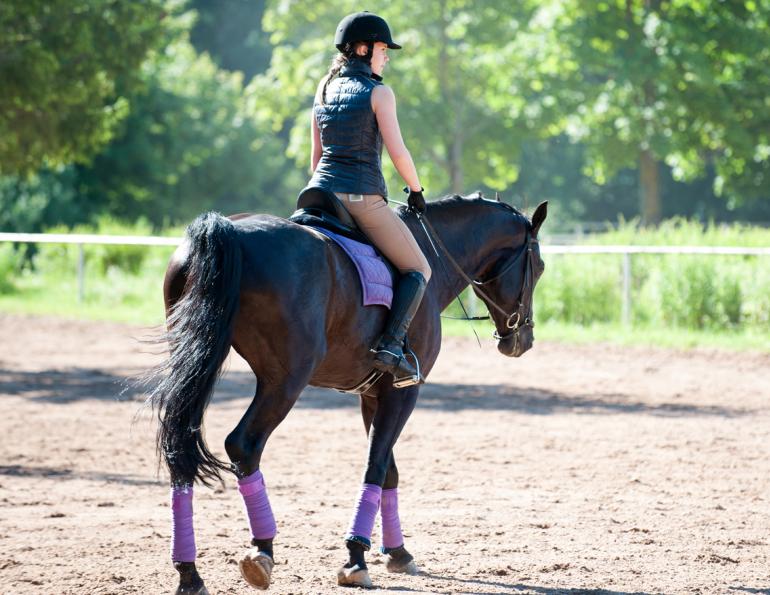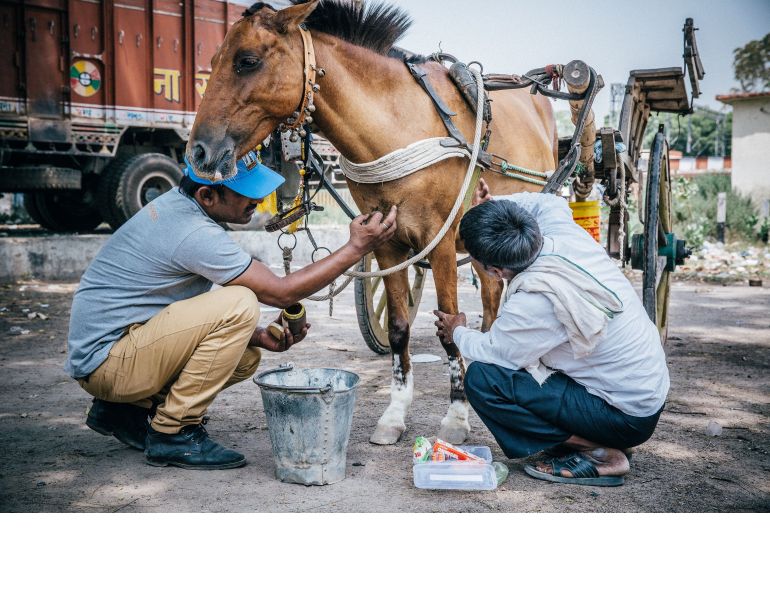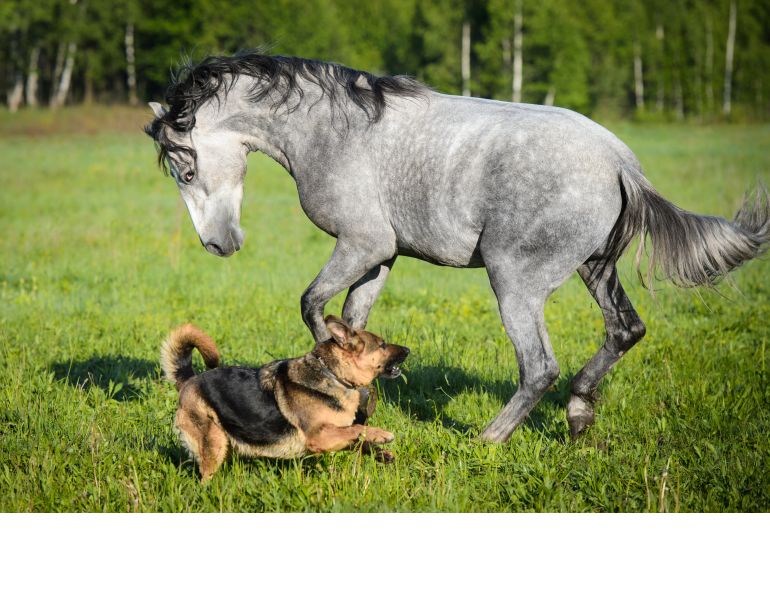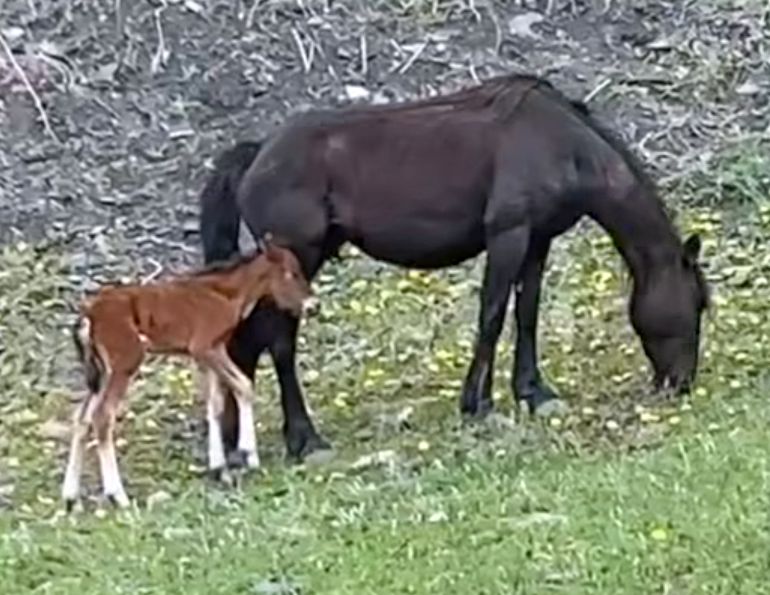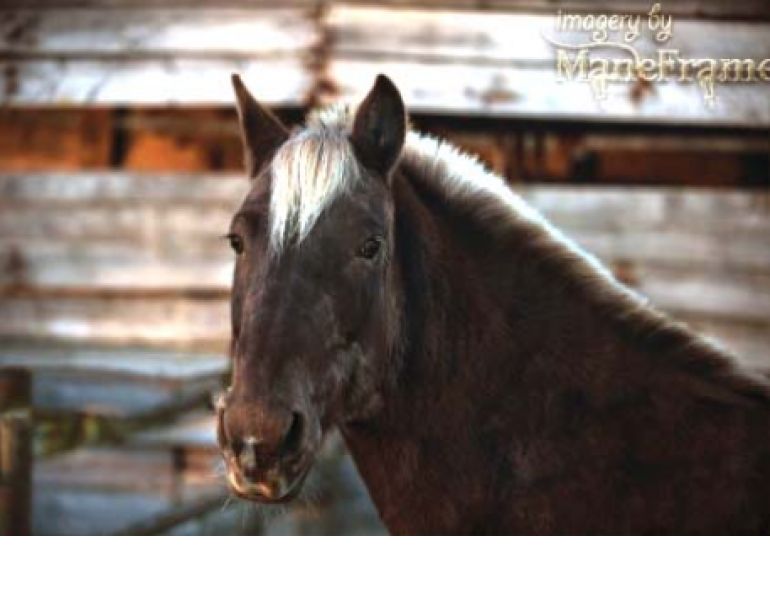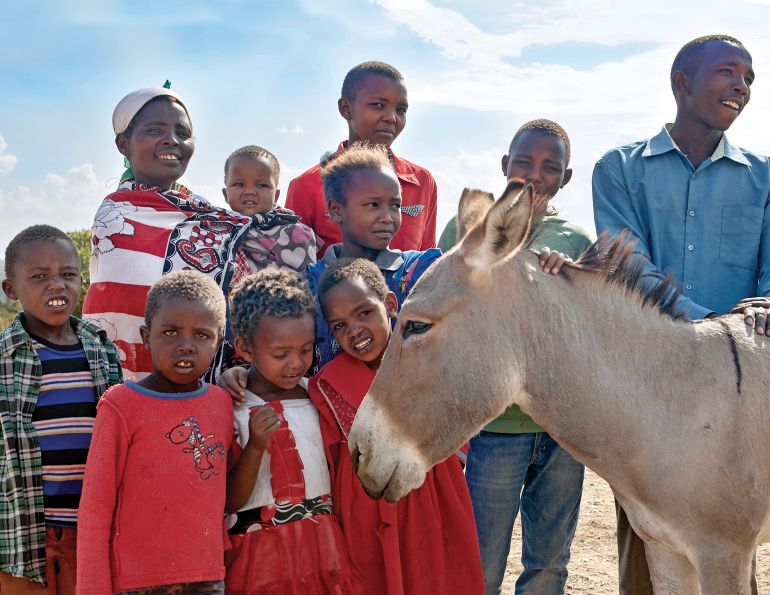A haven for working animals in Morocco
By Margaret Evans
October 11, 2009, was a warm Sunday evening in Marrakech, Morocco. The clatter and babble of the colourful markets was subsiding as bikes, buses, horse-drawn caleches and donkey carts made their way home.
But one cart clattered on with an urgency of its own. It was heading for the veterinary clinic of the UK-headquartered Society for the Protection of Animals Abroad (SPANA), which provides free veterinary care for working animals in some of the world’s poorest countries. On the cart was a distressed jenny donkey in the final stages of tetanus. She was rigid, recumbent, and barely breathing. And she was also in the final stages of pregnancy.
The veterinary team led by Dr. Boubker leapt into action, knowing euthanasia would be the only humane option for the jenny. But they would do everything possible to save the baby through an emergency caesarean section. Within moments, a tiny grey colt was delivered and laid on insulating matting. Dr. Boubker then administered the needle that would end the jenny’s suffering.
The tiny colt was called Tommy, and he faced many challenges. With no colostrum (his dam’s milk would have been toxic from the tetanus bacillus), he was fed ULT (ultra-high temperature processed) milk and honey. Being somewhat premature (by how much no one knew) he had no sucking reflex so that was solved with a naso-gastric tube which delivered his milk for ten days, but care had to be taken not to get fluid in his lungs. He needed a blood transfusion and tetanus anti-serum to boost his immune system. His temperature rose but soon settled. After an agonizing first two weeks, Tommy began to gain strength, get his legs under him, and take on the challenges of life as an orphaned foal.
Curiosity got the better of him. He made friends with another donkey called Obama and the two explored their veterinary home.
“Tommy remained at SPANA for two years,” says Susan Machim, director of Jarjeer Mule and Donkey Sanctuary in Marrakech and closely linked with SPANA. “The vets used him in their classroom for local children because he could be petted and it was hoped that he would develop awareness in the next generation of emotional ties with working animals. But as he reached adolescence he began to see the children, and others, as competition to his status. He became more aggressive and bit several people – including me! At this point, the chief technician said that he needed to work and could he come to our land and help. We agreed to take him but sought the advice of a professor at Liverpool University who had previously advised [during] his caesarean birth. He advised not only castration, but keeping Tommy with a strong female donkey, which we did and it worked.”
Machim and her partner, Charles, had built the villa they named Jarjeer in the foothills of the Atlas Mountains near Marrakech. When they purchased the land it had been covered with the perennial flowering plant wild rocket, which belongs to the mustard family. It is native to Europe and western Asia, and common throughout much of the western world.
“The herb is known in Arabic as ‘Jarjeer’ and was, in turn, the medieval cure for mental illness,” says Machim. “As I had worked for most of my adult life in psychiatry and latterly as a barrister specialising in mental health, the term seemed the right name for our new home. As matters stand now, some of our donkeys are training as therapy donkeys and we employ one member of staff who has schizophrenia.”
Tommy went to live at Jarjeer late in 2011 and quickly became their ambassador, representing all working donkeys and mules. Today the five-hectare sanctuary has 37 equines including seven ex-working mules.
There’s Picasso, a very old grey donkey who arrived barely able to stand. Pablo had been left for dead after a lifetime of work in the medina, the old part of the city. He lived happily at the sanctuary for three years before he died peacefully of old age with everyone around him. Lucky was rescued from a building site where he had been tethered and left to die because he had lost all his teeth, due to harsh bitting, and could no longer eat. Emily and Byed are two female donkeys who worked in a Berber village. Clover came from Tangier with half a hoof missing; she is now closely bonded to Byed. Jules came from northern Morocco, having become completely blind and with breathing difficulties due to severe parasite infection. Salvo arrived with deformed hind hooves from being worked at too young an age.

The elderly white donkey, Byed (above), who was in failing health and was going blind with cataracts, has returned to excellent health and is finding her way round the paddock unaided. A little donkey called Clover became Byed’s new best friend. The change has been amazing.
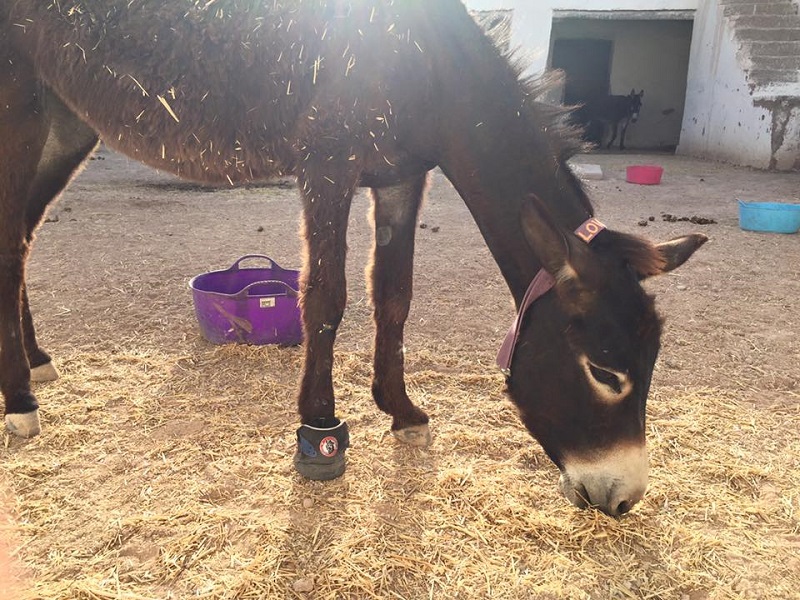
Clover’s new boot! Clover (above) has half a hoof missing and is very dependent on Byed.
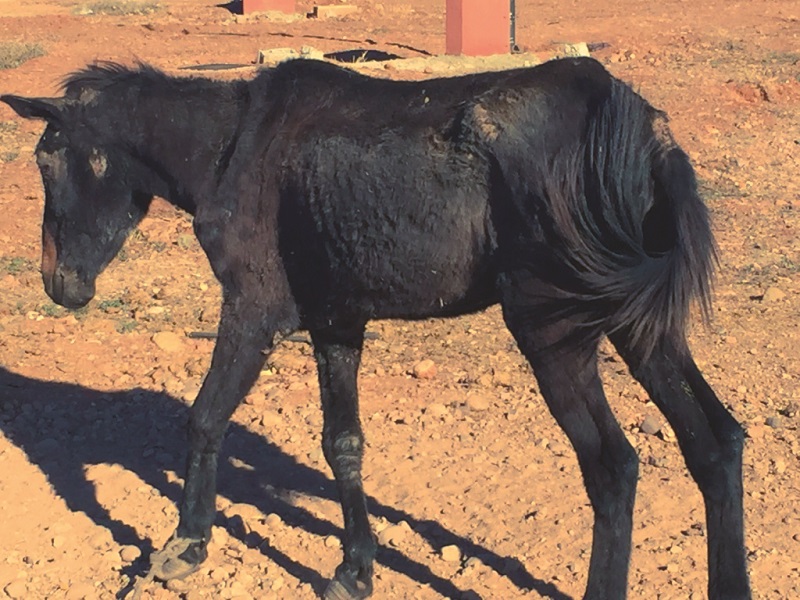
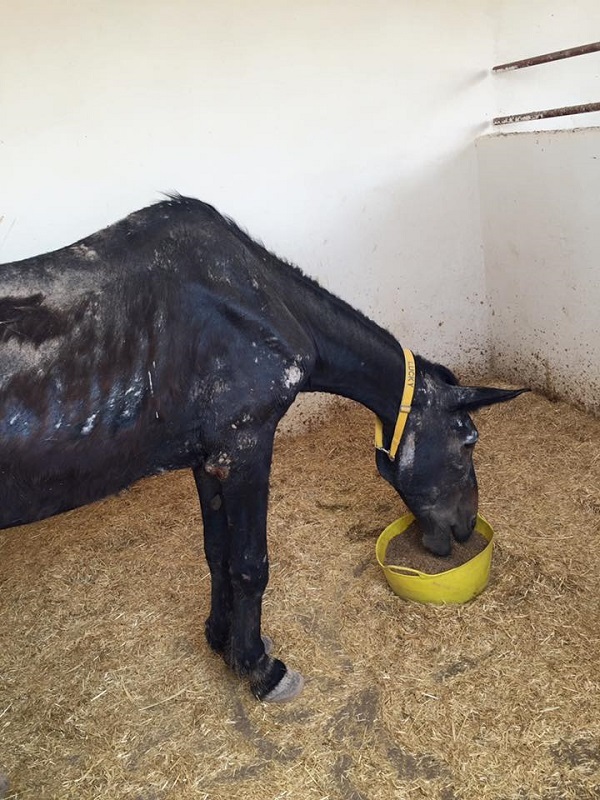
Lucky (above two photos) had been tethered and left to die at a building site. The caregivers at Jarjeer are trying to build Lucky up on a special diet. As long as he can stand without falling there is hope for a little while longer.
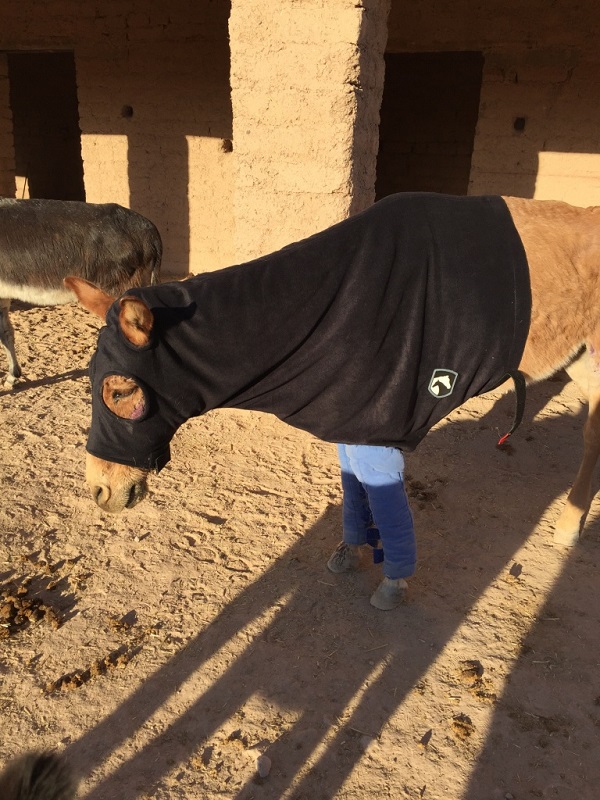
Gus (above) came with a back injury, a broken jaw, and just one eye. His back injury wouldn’t let him walk in a straight line. He had special padded rugging and a soft diet, but his injuries were so severe that he was eventually humanely euthanized.
The sanctuary functions as a hospice for those animals in the twilight of their lives. Stables have been built and more are planned. In addition, there’s an olive grove of 750 trees that provides a crop which is milled into olive oil and fed to the donkeys and mules as needed.
Caring for the animals naturally requires a lot of work.
“Volunteers are not permissible in Morocco without permission from the Government, which is tightly controlled,” says Machim. “That is clearly to preserve employment in a still poor country. We employ eight men full-time. That includes grooms, builders, and gardeners.”
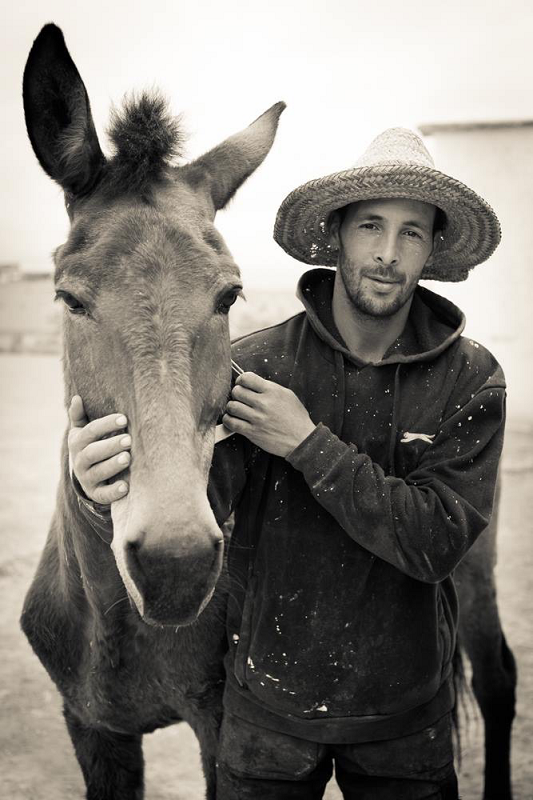
This is Touffik who works eight hours a day in the yard and the paddock and even comes in on his one day off a week. His commitment to Jarjeer is remarkable.
Working with them, Machim is acutely aware of the cultural differences and seeks to find the path of least resistance and understanding for the benefit of the animals.
“We have had nothing but support from local people. Originally there was opposition to castration but now the benefits have been seen in terms of improved animal behaviour, and social interaction attitudes have shifted. I believe this support has only grown because I work alongside the men and I learn from them. That position has been respected. I also have a very intelligent Moroccan right-hand man who tends to deal with superstitions, etc. and they are easily relegated to the back shelf. Locals know that we only take animals in need and that I am not a ‘soft touch.’ They are fascinated. Now [that we] have so many living together in harmony without being tethered, people enjoy coming to watch them. I don’t play the ‘blame game’ and we try to ameliorate any cultural issues before they arise.”
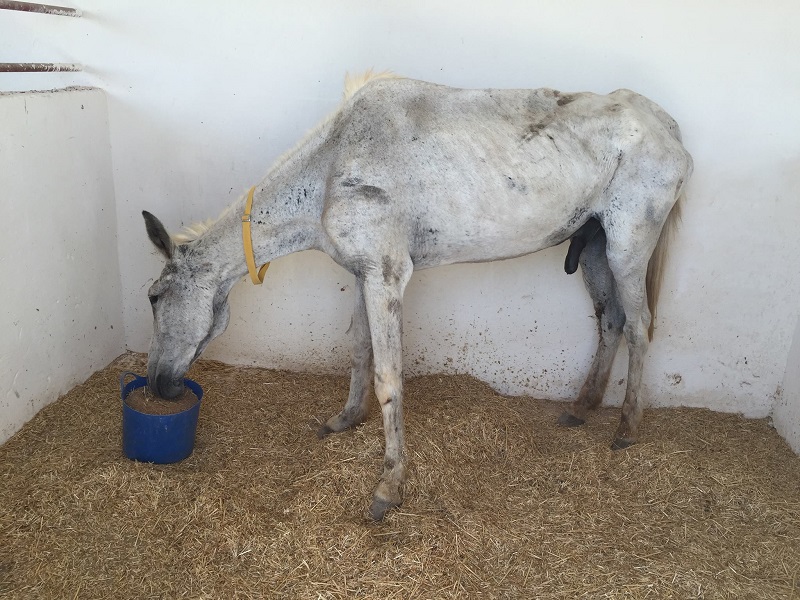
The sanctuary is a hospice for working animals in the twilight of their years.
Machim says their greatest accomplishment is that they are nationally and internationally recognized as a reputable and distinguished establishment. They certainly have local support and no criticism to date. Hopefully that will continue.
“I am most proud that we are seen as one of the best sanctuaries internationally and that we are in Morocco with Moroccan staff. That is not about me but about the people who work here.”
The plans are to grow, and Machim and Hantom hope to purchase adjoining land, expanding their facility into a specialist retirement home for working equines and a centre of excellence for research. While both give their entire pensions to Jarjeer’s mission, they are now taking donations, opening a coffee shop and boutique, and hosting Google advertising on their website.
“If Moroccans can accept that working animals have a value after their working life is at an end, it can only bode well for their relationship with people.”
If you would like to donate to the work of Jarjeer and help the mules and donkeys of Morocco, visit their website at www.jarjeer.org.
To learn more about the work of SPANA, visit www.spana.org.
Photos courtesy of the Jarjeer Mule and Donkey Sanctuary.



